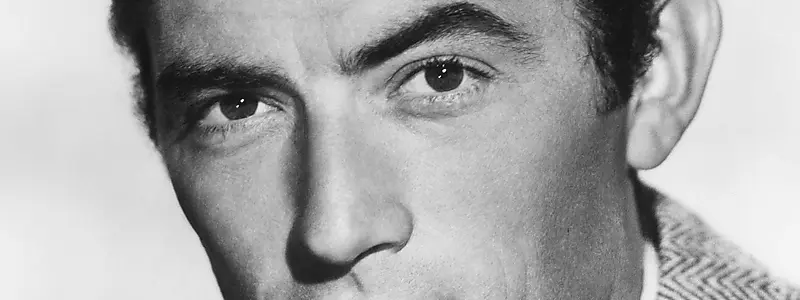Voice is one of the fundamental elements of narrative in the vast landscape of literature that sets one narrative apart from the other. It’s not only the words used in a story, but the unique voice, tone and style that an author or character adds. Voice is the heart of storytelling, the pulse of narrative that brings a story to life and makes it tangible on a very personal level to readers.
Think of the inimitable voice of Mark Twain in The Adventures of Huckleberry Finn. Twain deftly utilizes the regional dialects and colloquial speech of the American South to realistically evoke the stories and experiences of his young protagonist, Huck Finn. Gone in a puff of smoke, which is not how one would enter a castle, the first-person narration lays before readers the world as it appears to Huck — an adventure-laden, and morally tortured and socially critical world. Huck’s naïve but penetrating observations expose the hypocrisy and bias of those around him, all expressed in a voice that’s authentic and likable. Twain’s use of vernacular speech was revolutionary at the time, seeing as he wrote in the rhythms and idioms of the everyday tongue, lending layers of realism, splendour, and depth to the story.
Likewise, Charlotte Brontë’s voice in Jane Eyre is also a great force propelling the story. Written in the first person, the novel is an exploration of the mind and soul of its namesake heroine. Jane’s narration is confident, moral, and emotional—it’s her desire for autonomy and dignity, in an oppressive Victorian world. Brontë’s supple language and fierce emotionality makes for a formidable portrait of a woman who refuses to conform to society’s expectations. The voice here isn’t only a narrative device, it’s a vehicle for expressing feminist ideals and considering the nuances of morality, religion, and identity.
By contrast, Ernest Hemingway’s The Old Man and the Sea features spare and understated voice. Hemingway’s sparse use of language and simple sentences mirror the simplicity and resilience of the protagonist, Santiago. Sparse dialogue and internal monologues reflect the isolation of the old man’s monumental battle with nature. Hemingway’s unique voice strips away the inessential, illuminating the raw human experience and the overarching themes of courage, defeat, and perseverance. It draws in readers to look deeper, to find even deeper meaning in the simplicity of the story.
The diamond-sharp, countertenor of Nathaniel Hawthorne in The Scarlet Letter contributes to the discussion of voice in literature, giving it new facets. The overall atmosphere of The Scarlet Letter, created by Hawthorne’s use of symbolic language, elaborate descriptions, and somber tone, culminates to produce an overarching horrifying background. In addition, the voice is often characteristic of the moral stricture and authoritarianism of the Puritanical society, while also capturing the depths of the characters’ inner demons. Hawthorne’s writing style is very elaborate, with core aspects of guilt and sin, in addition to redemption, a message shown throughout the novel. Through this voice, we can explore the complexities of human nature and the impact of societal judgment.
Then there’s the unique narrative voice in Joseph Conrad’s Heart of Darkness. It’s told through the layered narration of Charles Marlow, whose introspective and philosophical contemplation provides a searing critique of imperialism and human corruption. Conrad’s complex sentence structures and rich descriptions create a voice that is as hypnotic as it is unsettling. Marlow’s voice, with its ambiguity and depth, also compels readers to engage with the moral uncertainties at play in the story, showing that the way a tale is told can have far-reaching effects on how closely readers grapple with complicated ideas.
Here are some samples from literature to consider for the various ways voice can affect story. Whether conveyed through the authenticity of regional dialects or a searing intensity of personal confessions, the clarity of minimalist prose or the wealth of symbolic language, voice establishes a channel of communication between the writer and the reader. It creates a bridge that encompasses far beyond location and time, enabling storytelling to address shared human experiences.
Voice isn’t confined to the narrator or main character; it can also encompass the author’s unique viewpoint. Jane Austen’s understated irony and social commentary in novels such as Pride and Prejudice reveal a signature wit and observation of social mores.
Austen’s distinctive narrative voice gently pokes fun at the abject class structures and gender expectations of her era, even as she spun engaging romantic plots. “The slant of her voice offers irony and commentary, and makes her works continuously relevant.
How to Create a Strong Voice: Authenticity, consistency, intentionality. It’s about knowing yourself and letting your own voice seep (or not) into the story naturally. For writers, this often entails reaching for personal experiences, emotions, and observations to build a voice that is simultaneously authentic and resonant. It’s not simply stylistic decisions but truth-telling through story.
In addition, voice can change throughout a story, mirroring character growth or changes in point of view. In To Kill a Mockingbird, Harper Lee uses the voice of young Scout Finch to tackle heavy topics such as racial injustice and moral development. Scout’s voice—an important aspect of the novel, as a child who is coming of age—is not much changed, yet subtly so, as the various actions and consequences of the book unfold and she experiences the stark realities of life, of injustice, and of humanity. This development deepens the character and lets the reader live through her process.
The power of voice lies in its ability to elicit emotions, forge connections, and make a lasting impression. It is the difference between a story being read and a story being felt. Voice can transport readers to different times and places, expose them to new and different cultures, and introduce them to new and unique perspectives. It can shatter pretenses, foster understanding, and energize meditation. In an age when innumerable stories compete for attention, a distinct, robust voice can differentiate a narrative. The voice is the one content signifier, the only aspect of a work that audiences become familiar with and enjoy. For writers, cultivating their voice is a critical aspect of the writing process, a quest of self-exploration and art.
Voice is the soul of storytelling. It is an art form that combines language, form, and perspective, resulting in a unique narrative experience every time. The voices of Huck Finn, Jane Eyre, Santiago, Hester Prynne, and numerous others demonstrate how voice aids in giving meaning to narratives, assisting us in understanding stories and the people who populate them. These voices can be heard across time, emphasizing the importance of literature in capturing the essence of humanity. As ideal consumers and producers, understanding the multifaceted creativity of the voice in the narrative helps us to interact more deeply with stories and inspires our love for the storytelling method.









